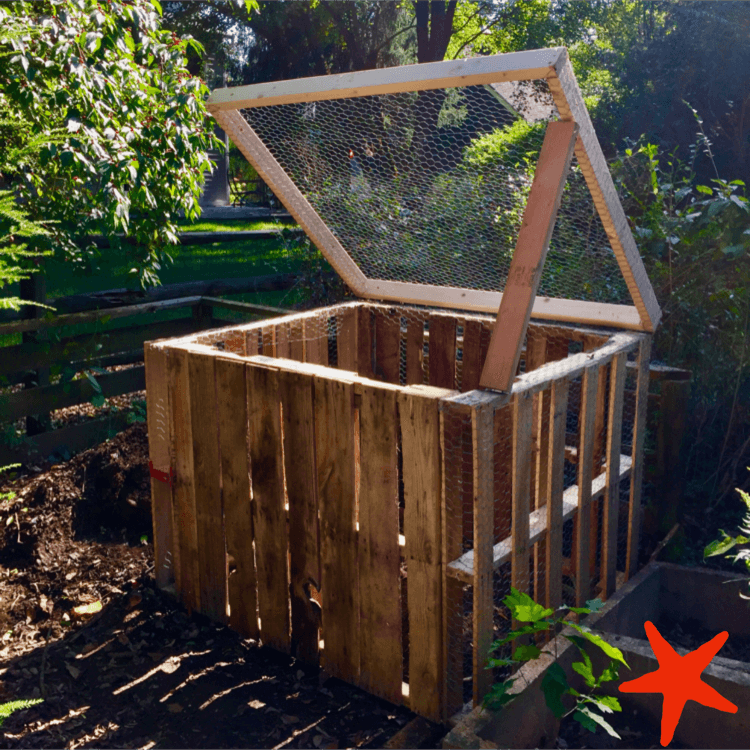
5 Reasons to Try Composting
- Help slow global warming, really. Did you know that in landfills normally food and yard waste doesn’t break down the same way it does in nature? In a landfill there’s no oxygen, all of the materials are too tightly packed. So instead, as it breaks down it releases methane gas, a more potent green house gas than the normal carbon dioxide, into the air.
- Make room for other trash. Not only does composting make sure food waste doesn’t create harmful gases in landfills, but landfills everywhere are running out of room. The EPA estimates that roughly 25% of the garbage in the U.S. is made up of yard trimmings and food scraps. Skipping single-use plastic is another way to reduce the trash in landfills!
- Save money. If you are buying fertilizer each year for your yard or garden this is a great, free alternative! Plus compost returns valuable nutrients to the soil to help maintain soil quality and fertility.
- You can do it anywhere. While most composting takes place in the yard, there are options for those with a more urban lifestyle. Many
cities have compost programs which will haul away your composted organic material for free. Not sure how to find one? Check out Earth911.com or the EPA for local resources in your area. There are lots of composter options available for those with small yards or who lack the will or skill to build their own!
- Composting tools have come a long way. You don’t have to give up style to compost. Check out this counter top composter pail with a built in charcoal filter to stop odors from leaking out. A quick scan on pinterst will show a variety of options for compost bins and pails!
What you Need to Know to Try Composting

If you don’t have composting pick up in your town, there are two different ways to go about DIY composting. One is to set aside some space in your yard and follow the directions below. If that’s not going to work for you, there are lots of self contained composter options available Then just follow their directions.
Composting Directions
- Place compost in a in a sunny corner of your back yard. A space 3 – 5 feet is ideal.
- Compost should be an even mix of green and brown. Examples of Brown (dry waste) include: sawdust, nut shells, leaves, corn stalks, corn cobs, pine needles, straw, hay, twigs, newspapers and computer paper (shred first). Examples of Green (wet waste): egg shells, weeds, hair, grass clippings, fruit waste, vegetable waste, grains, coffee grounds.
- Cover with dry leaves or hay when rainy and add water during dry spells.
- Aerate with a pitchfork every 3-4 weeks.
- If compost heap becomes taller than 5 feet, start a new one.
After several months of decomposing and with the assistance of sun, air, water, insects, worms, bacteria and fungi, your compost heap will be converted into rich black dirt and ready to be spread around your yard plants, trees or garden.
What you need to build a composter from pallets:
- 4 pallets
- chicken wire
- 2 – 2×4 to make the top
- 2 – old door hinges
- Pneumatic Staple Gun or fencing staples and a hammer
- Screw the pallets together in a way that you can remove the front panel of the compost bin to access the compost. Our front pallet panel was pretty well covered so we didn’t have to use chicken wire on it (see picture at the top of the post to get an example of the access).
- Use a pneumatic Staple Gun to attach chicken wire to pallets to keep critters out. Small fencing staples can work, but the pallets are really hard to hammer into.
- The lid was made with a square of 2×4’s and chicken wire and was attached with 2 old door hinges.
Ali says, “Composting has really helped us cut down our “trash”. With composting and recycling, as a family of 4 we generally don’t even fill 1 kitchen trash bag a week!”
We’d love to hear about your composting experience or ideas to share with others. Send us an email or leave us a message or a comment on Twitter, Facebook, Instagram & Pinterest


 cities have compost programs which will haul away your composted organic material for free. Not sure how to find one? Check out
cities have compost programs which will haul away your composted organic material for free. Not sure how to find one? Check out 
